High-Performance Methylsilsesquioxane Aerogels: Hydrolysis Mechanisms and Maximizing Compression Properties
Abstract
:1. Introduction
2. Results and Discussion
2.1. Hydrolysis Kinetics of MTMS Solutions
2.2. Transparency and Gelation Time (GT) of MTMS Sols
2.3. Microstructure of As-Synthesized MSQ Aerogels
2.4. Optimization of Oxalic Acid Concentration (cOA) in the MTMS Precursor
2.4.1. Macroscopic Morphology, Bulk Density, and Linear Shrinkage Ratio of As-Synthesized MSQ Aerogels
2.4.2. Compression Properties of As-Synthesized MSQ Aerogels
2.5. Optimization of Hydrolysis Time (th) of MTMS Precursor
2.5.1. Macroscopic Morphology, Bulk Density, and Linear Shrinkage Ratio of As-Synthesized MSQ Aerogels
2.5.2. Compression Properties of As-Synthesized MSQ Aerogels
3. Conclusions
4. Materials and Methods
4.1. Synthesis Method
4.2. Characterization
Supplementary Materials
Author Contributions
Funding
Institutional Review Board Statement
Informed Consent Statement
Data Availability Statement
Conflicts of Interest
References
- Yang, X.; Jiang, P.; Xiao, R.; Fu, R.; Liu, Y.; Ji, C.; Song, Q.; Miao, C.; Yu, H.; Gu, J.; et al. Robust silica-agarose composite aerogels with interpenetrating network structure by in situ sol-gel process. Gels 2022, 8, 303. [Google Scholar] [CrossRef] [PubMed]
- Li, C.; Chen, Z.; Dong, W.; Lin, L.; Zhu, X.; Liu, Q.; Zhang, Y.; Zhai, N.; Zhou, Z.; Wang, Y.; et al. A review of silicon-based aerogel thermal insulation materials: Performance optimization through composition and microstructure. J. Non-Cryst. Solids 2021, 553, 120517. [Google Scholar] [CrossRef]
- Aghajamali, M.; Iqbal, M.; Purkait, T.K.; Hadidi, L.; Sinelnikov, R.; Veinot, J.G.C. Synthesis and properties of luminescent silicon nanocrystal/silica aerogel hybrid materials. Chem. Mater. 2016, 28, 3877–3886. [Google Scholar] [CrossRef]
- Xie, Y.; Zhou, B.; Du, A. Slow-sound propagation in aerogel-inspired hybrid structure with backbone and dangling branch. Adv. Compos. Hybrid Mater. 2021, 4, 248–256. [Google Scholar] [CrossRef]
- Li, C.; Zhang, G.; Lin, L.; Wu, T.; Brunner, S.; Galmarini, S.; Bi, J.; Malfait, W.J.; Zhao, S.; Ostrikov, K.K. Silica aerogels: From materials research to industrial applications. Int. Mater. Rev. 2023, 1–39. [Google Scholar] [CrossRef]
- Wernery, J.; Mancebo, F.; Malfait, W.J.; O’Connor, M.; Jelle, B.P. The economics of thermal superinsulation in buildings. Energy Build. 2021, 253, 111506. [Google Scholar] [CrossRef]
- Yu, Z.; Yang, N.; Apostolopoulou-Kalkavoura, V.; Qin, B.; Ma, Z.; Xing, W.; Qiao, C.; Bergström, L.; Antonietti, M.; Yu, S. Fire-retardant and thermally insulating phenolic-silica aerogels. Angew. Chem. Int. Ed. 2018, 57, 4538–4542. [Google Scholar] [CrossRef]
- Jones, S.M. Aerogel: Space exploration applications. J. Sol-Gel Sci. Technol. 2006, 40, 351–357. [Google Scholar] [CrossRef]
- Zhang, S.; Chen, C.; Ahn, W. Recent progress on co2 capture using amine-functionalized silica. Curr. Opin. Green Sustain. 2019, 16, 26–32. [Google Scholar] [CrossRef]
- Guo, X.; Shan, J.; Lai, Z.; Lei, W.; Ding, R.; Zhang, Y.; Yang, H. Facile synthesis of flexible methylsilsesquioxane aerogels with surface modifications for sound-absorbance, fast dye adsorption and oil/water separation. Molecules 2018, 23, 945. [Google Scholar] [CrossRef]
- Li, L.; Xu, C.; Chang, R.; Yang, C.; Jia, C.; Wang, L.; Song, J.; Li, Z.; Zhang, F.; Fang, B.; et al. Thermal-responsive, super-strong, ultrathin firewalls for quenching thermal runaway in high-energy battery modules. Energy Storage Mater. 2021, 40, 329–336. [Google Scholar] [CrossRef]
- Motahari, S.; Motlagh, G.H.; Moharramzadeh, A. Thermal and flammability properties of polypropylene/silica aerogel composites. J. Macromol. Sci. B. 2015, 54, 1081–1091. [Google Scholar] [CrossRef]
- Guidotti, R.A.; Reed, S.T.; Ashley, C.S.; Reinhardt, F.W. Evaluation of aerogel materials for high-temperature batteries. In Proceedings of the 34th Intersociety Energy Conversion Engineering Conference, Vancouver, BC, Canada, 2–5 August 1999. [Google Scholar] [CrossRef]
- An, L.; Petit, D.; Di Luigi, M.; Sheng, A.; Huang, Y.; Hu, Y.; Li, Z.; Ren, S. Reflective paint consisting of mesoporous silica aerogel and titania nanoparticles for thermal management. ACS Appl. Nano Mater. 2021, 4, 6357–6363. [Google Scholar] [CrossRef]
- Yang, X.; Duan, Y.; Feng, X.; Chen, T.; Xu, C.; Rui, X.; Ouyang, M.; Lu, L.; Han, X.; Ren, D.; et al. An experimental study on preventing thermal runaway propagation in lithium-ion battery module using aerogel and liquid cooling plate together. Fire Technol. 2020, 56, 2579–2602. [Google Scholar] [CrossRef]
- MarketResearch. Available online: https://marketresearch.biz/infographics/aerogel-market (accessed on 25 October 2017).
- Li, C.; Liu, Q.; Zhang, G.; Lin, L.; Ostrikov, K.K. Rapid synthesis of MTES-derived silica aerogel monoliths in cetyltrimethylammonium bromide/water solvent system by ambient pressure drying. Powder Technol. 2023, 418, 118314. [Google Scholar] [CrossRef]
- Parale, V.G.; Lee, K.; Park, H. Flexible and transparent silica aerogels: An overview. J. Korean Ceram. Soc. 2017, 54, 184–199. [Google Scholar] [CrossRef]
- Wang, X.; Jana, S.C. Synergistic hybrid organic–inorganic aerogels. ACS Appl. Mater. Interfaces 2013, 5, 6423–6429. [Google Scholar] [CrossRef]
- He, S.; Chen, X. Flexible silica aerogel based on methyltrimethoxysilane with improved mechanical property. J. Non-Cryst. Solids 2017, 463, 6–11. [Google Scholar] [CrossRef]
- Zhong, L.; Chen, X.; Song, H.; Guo, K.; Hu, Z. Highly flexible silica aerogels derived from methyltriethoxysilane and polydimethylsiloxane. New J. Chem. 2015, 39, 7832–7838. [Google Scholar] [CrossRef]
- Lei, C.; Hu, Z.; Zhang, Y.; Yang, H.; Li, J.; Hu, S. Tailoring structural and physical properties of polymethylsilsesquioxane aerogels by adjusting NH3·H2O concentration. Micropor. Mesopor. Mater. 2018, 258, 236–243. [Google Scholar] [CrossRef]
- Zhao, C.; Li, Y.; Ye, W.; Shen, X.; Yuan, X.; Ma, C.; Cao, Y. Performance regulation of silica aerogel powder synthesized by a two-step sol-gel process with a fast ambient pressure drying route. J. Non-Cryst. Solids 2021, 567, 120923. [Google Scholar] [CrossRef]
- Nah, H.; Kim, Y.; Kim, T.; Lee, K.; Parale, V.G.; Lim, C.; Seo, J.; Park, H. Comparisonal studies of surface modification reaction using various silylating agents for silica aerogel. J. Sol-Gel Sci. Technol. 2020, 96, 346–359. [Google Scholar] [CrossRef]
- Sert Çok, S.; Koç, F.; Gizli, N. Lightweight and highly hydrophobic silica aerogels dried in ambient pressure for an efficient oil/organic solvent adsorption. J. Hazard. Mater. 2021, 408, 124858. [Google Scholar] [CrossRef] [PubMed]
- Brinker, C.J. Hydrolysis and condensation of silicates: Effects on structure. J. Non-Cryst. Solids 1988, 100, 31–50. [Google Scholar] [CrossRef]
- Wang, J.; Petitb, D.; Ren, S. Transparent thermal insulation silica aerogels. Nanoscale Adv. 2020, 2, 5504–5515. [Google Scholar] [CrossRef] [PubMed]
- Dong, Y.; Zeng, W.; Lin, H.; He, Y. Preparation of a novel water-soluble organosilane coating and its performance for inhibition of pyrite oxidation to control acid mine drainage at the source. Appl. Surf. Sci. 2020, 531, 147328. [Google Scholar] [CrossRef]
- Ciobotaru, I.; Maior, I.; Vaireanu, D.; Cojocaru, A.; Caprarescu, S.; Ciobotaru, I. The determination of the optimum hydrolysis time for silane films deposition. Appl. Surf. Sci. 2016, 371, 275–280. [Google Scholar] [CrossRef]
- Tian, C. Internal influences of hydrolysis conditions on rutile TiO2 pigment production via short sulfate process. Mater. Res. Bull. 2018, 103, 83–88. [Google Scholar] [CrossRef]
- Pohl, E.R.; Osterholtz, F.D. Kinetics and mechanism of aqueous hydrolysis and condensation of alkyltrialkoxysilanes. In Molecular Characterization of Composite Interfaces; Springer Science & Business Media: Berlin/Heidelberg, Germany, 1985. [Google Scholar] [CrossRef]
- Brochier Salon, M.; Belgacem, M.N. Competition between hydrolysis and condensation reactions of trialkoxysilanes, as a function of the amount of water and the nature of the organic group. Colloids Surf. A 2010, 366, 147–154. [Google Scholar] [CrossRef]
- Venkateswara Rao, A.; Bhagat, S.D.; Hirashima, H.; Pajonk, G.M. Synthesis of flexible silica aerogels using methyltrimethoxysilane (mtms) precursor. J. Colloid Interface Sci. 2006, 300, 279–285. [Google Scholar] [CrossRef]
- Zhao, X.; Wang, Y.; Luo, J.; Wang, P.; Xiao, P.; Jiang, B. The influence of water content on the growth of the hybrid-silica particles by sol-gel method. Silicon 2021, 13, 3413–3421. [Google Scholar] [CrossRef]
- Khedkar, M.V.; Jadhav, S.A.; Somvanshi, S.B.; Kharat, P.B.; Jadhav, K.M. Physicochemical properties of ambient pressure dried surface modified silica aerogels: Effect of pH variation. SN Appl. Sci. 2020, 2, 696. [Google Scholar] [CrossRef]
- Twej, W.A.A.; Alattar, A.M.; Drexler, M.; Alamgir, F.M. Tuned optical transmittance in single-step-derived silica aerogels through pH-controlled microstructure. Int. Nano Lett. 2017, 7, 257–265. [Google Scholar] [CrossRef]
- Venkateswara Rao, A.; Bhagat, S.D. Synthesis and physical properties of TEOS-based silica aerogels prepared by two step (acid–base) sol-gel process. Solid State Sci. 2004, 6, 945–952. [Google Scholar] [CrossRef]
- Bangi, U.K.H.; Parvathy Rao, A.; Hirashima, H.; Venkateswara Rao, A. Physico-chemical properties of ambiently dried sodium silicate based aerogels catalyzed with various acids. J. Sol-Gel Sci. Technol. 2009, 50, 87–97. [Google Scholar] [CrossRef]
- Luo, Y.; Li, Z.; Zhang, W.; Yan, H.; Wang, Y.; Li, M.; Liu, Q. Rapid synthesis and characterization of ambient pressure dried monolithic silica aerogels in ethanol/water co-solvent system. J. Non-Cryst. Solids 2019, 503–504, 214–223. [Google Scholar] [CrossRef]
- Bhagat, S.D.; Oh, C.; Kim, Y.; Ahn, Y.; Yeo, J. Methyltrimethoxysilane based monolithic silica aerogels via ambient pressure drying. Micropor. Mesopor. Mater. 2007, 100, 350–355. [Google Scholar] [CrossRef]
- Cai, L.; Shan, G. Elastic silica aerogel using methyltrimethoxysilane precusor via ambient pressure drying. J. Porous Mater. 2015, 22, 1455–1463. [Google Scholar] [CrossRef]
- Luo, C.; Li, H.; Qiao, L.; Liu, X. Development of surface tension-driven microboats and microflotillas. Microsyst. Technol. 2012, 18, 1525–1541. [Google Scholar] [CrossRef]
- Issa, A.; Luyt, A. Kinetics of alkoxysilanes and organoalkoxysilanes polymerization: A review. Polymers 2019, 11, 537. [Google Scholar] [CrossRef]
- Urata, S.; Kuo, A.; Murofushi, H. Self-assembly of the cationic surfactantn-hexadecyl-trimethylammonium chloride in methyltrimethoxysilane aqueous solution: Classical and reactive molecular dynamics simulations. Phys. Chem. Chem. Phys. 2021, 23, 14486–14495. [Google Scholar] [CrossRef]
- Jabbour, J.; Calas, S.; Gatti, S.; Kribich, R.K.; Myara, M.; Pille, G.; Etienne, P.; Moreau, Y. Characterization by IR spectroscopy of an hybrid sol-gel material used for photonic devices fabrication. J. Non-Cryst. Solids 2008, 354, 651–658. [Google Scholar] [CrossRef]
- El Rassy, H.; Pierre, A.C. NMR and IR spectroscopy of silica aerogels with different hydrophobic characteristics. J. Non-Cryst. Solids 2005, 351, 1603–1610. [Google Scholar] [CrossRef]
- Orel, B.; Ješe, R.; Vilčnik, A.; Štangar, U.L. Hydrolysis and solvolysis of methyltriethoxysilane catalyzed with HCl or trifluoroacetic acid: IR spectroscopic and surface energy studies. J. Sol-Gel Sci. Technol. 2005, 3, 251–265. [Google Scholar] [CrossRef]
- Dirè, S.; Borovin, E.; Ribot, F. Architecture of silsesquioxanes. In Handbook of Sol-Gel Science and Technology; Springer International Publishing: Cham, Switzerland, 2018; pp. 3119–3151. [Google Scholar] [CrossRef]
- Lin, H.; Rosu, C.; Jiang, L.; Sundar, V.A.; Breedveld, V.; Hess, D.W. Nonfluorinated superhydrophobic chemical coatings on polyester fabric prepared with kinetically controlled hydrolyzed methyltrimethoxysilane. Ind. Eng. Chem. Res. 2019, 58, 15368–15378. [Google Scholar] [CrossRef]
- Kanamori, K.; Aizawa, M.; Nakanishi, K.; Hanada, T. Elastic organic-inorganic hybrid aerogels and xerogels. J. Sol-Gel Sci. Technol. 2008, 48, 172–181. [Google Scholar] [CrossRef]
- Al-Oweini, R.; El-Rassy, H. Synthesis and characterization by ftir spectroscopy of silica aerogels prepared using several Si(OR)4 and R″Si(OR′)3 precursors. J. Mol. Struct. 2009, 919, 140–145. [Google Scholar] [CrossRef]
- Sinkó, K. Influence of chemical conditions on the nanoporous structure of silicate aerogels. Materials 2010, 3, 704–740. [Google Scholar] [CrossRef]
- Ponton, A.; Warlus, S.; Griesmar, P. Rheological study of the sol-gel transition in silica alkoxides. J. Colloid Interface Sci. 2002, 249, 209–216. [Google Scholar] [CrossRef]
- Belton, D.J.; Deschaume, O.; Perry, C.C. An overview of the fundamentals of the chemistry of silica with relevance to biosilicification and technological advances. FEBS J. 2012, 279, 1710–1720. [Google Scholar] [CrossRef] [PubMed]
- Maleki, H.; Durães, L.; García-González, C.A.; Del Gaudio, P.; Portugal, A.; Mahmoudi, M. Synthesis and biomedical applications of aerogels: Possibilities and challenges. Adv. Colloid Interface Sci. 2016, 236, 1–27. [Google Scholar] [CrossRef]
- Keefer, D.K.; Brinker, C.J.; Clark, D.E. Better ceramics through chemistry. Mater. Res. Soc. Symp. Proc. 1984, 32, 15–24. [Google Scholar] [CrossRef]
- Dorcheh, A.S.; Abbasi, M.H. Silica aerogel; Synthesis, properties and characterization. J. Mater. Process. Technol. 2008, 199, 10–26. [Google Scholar] [CrossRef]
- Rao, A.V.; Sakhare, H.M.; Tamhankar, A.K.; Shinde, M.L.; Gadave, D.B.; Wagh, P.B. Influence of N,N-dimethylformamide additive on the physical properties of citric acid catalyzed TEOS silica aerogels. Mater. Chem. Phys. 1999, 60, 268–273. [Google Scholar] [CrossRef]
- Hegde, N.D.; Hirashima, H.; Venkateswara Rao, A. Two step sol-gel processing of teos based hydrophobic silica aerogels using trimethylethoxysilane as a co-precursor. J. Porous Mater. 2007, 14, 165–171. [Google Scholar] [CrossRef]
- Kanamori, K.; Nakanishi, k.; Hanada, T. Sol-gel synthesis, porous structure, and mechanical property of polymethylsilsesquioxane aerogels. J. Ceram. Soc. Jpn. 2009, 117, 1333–1338. [Google Scholar] [CrossRef]
- Loy, D.A.; Mather, B.; Straumanis, A.R.; Baugher, C.; Schneider, D.A.; Sanchez, A.; Shea, K.J. Effect of pH on the gelation time of hexylene-bridged polysilsesquioxanes. Chem. Mater. 2004, 16, 2041–2043. [Google Scholar] [CrossRef]
- Shajesh, P.; Smitha, S.; Aravind, P.R.; Warrier, K.G.K. Effect of 3-glycidoxypropyltrimethoxysilane precursor on the properties of ambient pressure dried silica aerogels. J. Sol-Gel Sci. Technol. 2009, 50, 353–358. [Google Scholar] [CrossRef]
- Nguyen, B.N.; Meador, M.A.B.; Tousley, M.E.; Shonkwiler, B.; McCorkle, L.; Scheiman, D.A.; Palczer, A. Tailoring elastic properties of silica aerogels cross-linked with polystyrene. ACS Appl. Mater. Interfaces 2009, 1, 621–630. [Google Scholar] [CrossRef]
- Hwang, S.; Jung, H.; Hyun, S.; Ahn, Y. Effective preparation of crack-free silica aerogels via ambient drying. J. Sol-Gel Sci. Technol. 2007, 41, 139–146. [Google Scholar] [CrossRef]
- Sarawade, P.B.; Kim, J.; Hilonga, A.; Kim, H.T. Influence of aging conditions on textural properties of water-glass-based silica aerogels prepared at ambient pressure. Korean J. Chem. Eng. 2010, 27, 1301–1309. [Google Scholar] [CrossRef]
- Alaoui, A.H.; Woignier, T.; Scherer, G.W.; Phalippou, J. Comparison between flexural and uniaxial compression tests to measure the elastic modulus of silica aerogel. J. Non-Cryst. Solids 2008, 354, 4556–4561. [Google Scholar] [CrossRef]
- Wong, J.C.H.; Kaymak, H.; Brunner, S.; Koebel, M.M. Mechanical properties of monolithic silica aerogels made from polyethoxydisiloxanes. Micropor. Mesopor. Mater. 2014, 183, 23–29. [Google Scholar] [CrossRef]

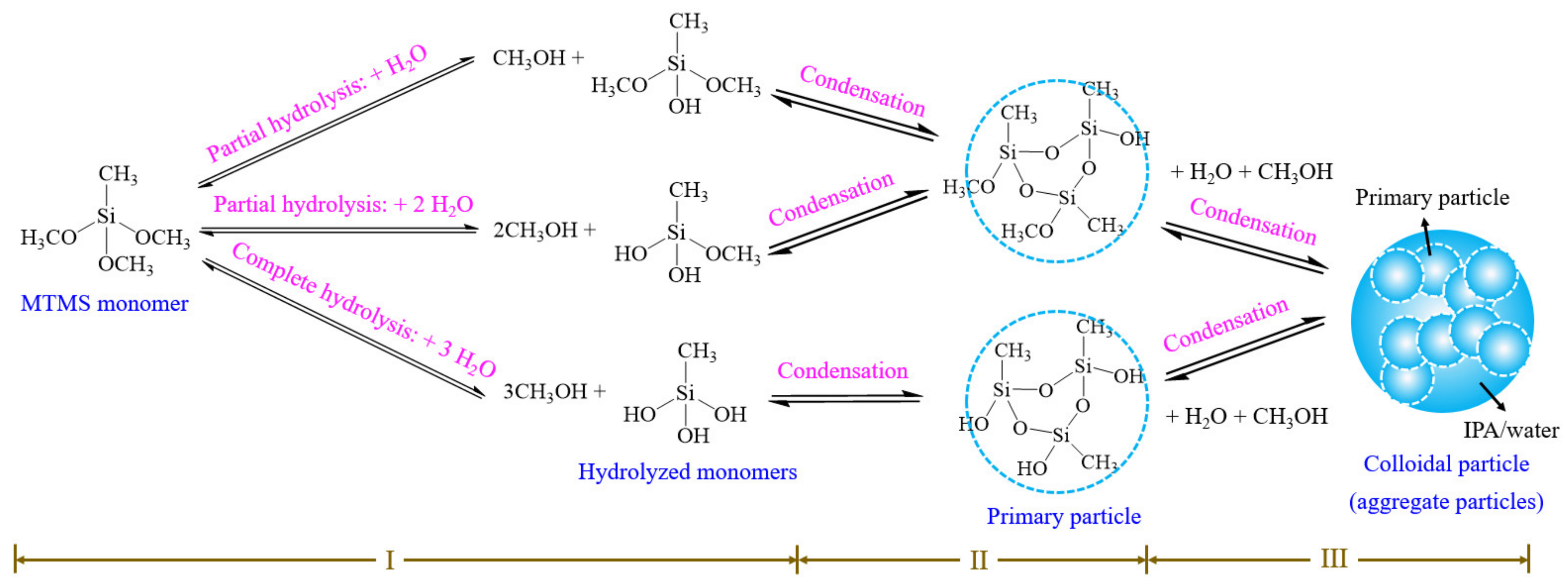
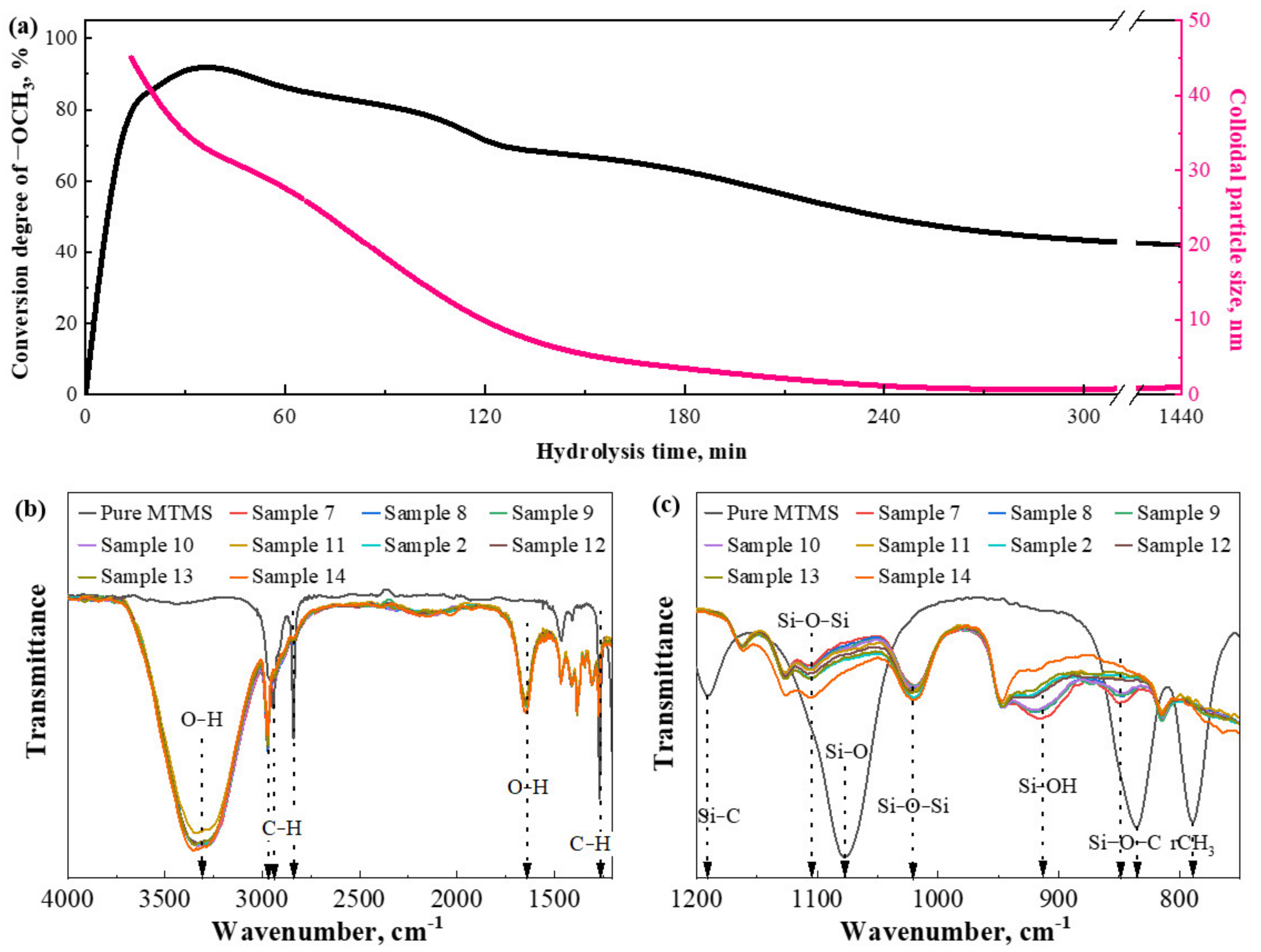
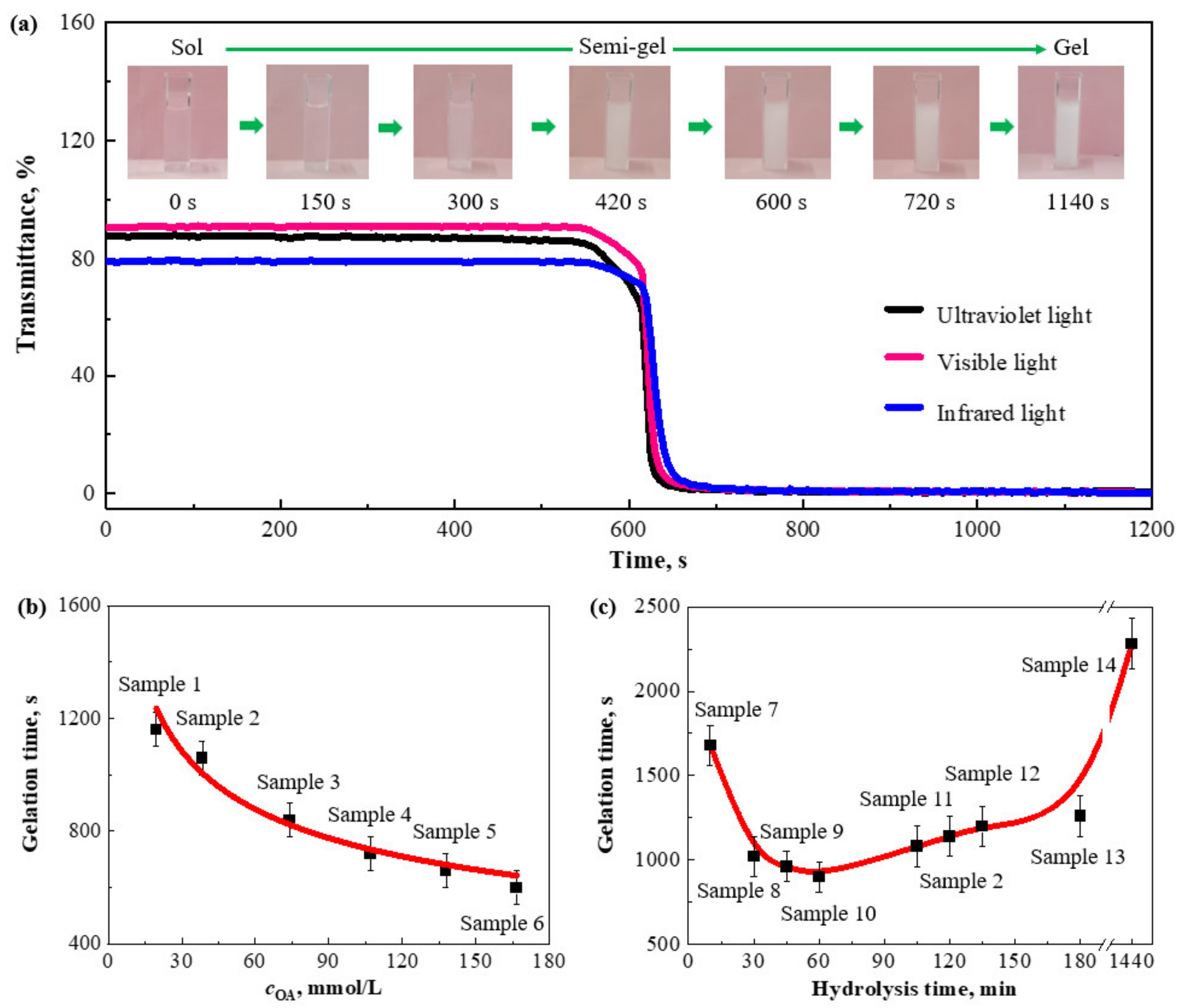
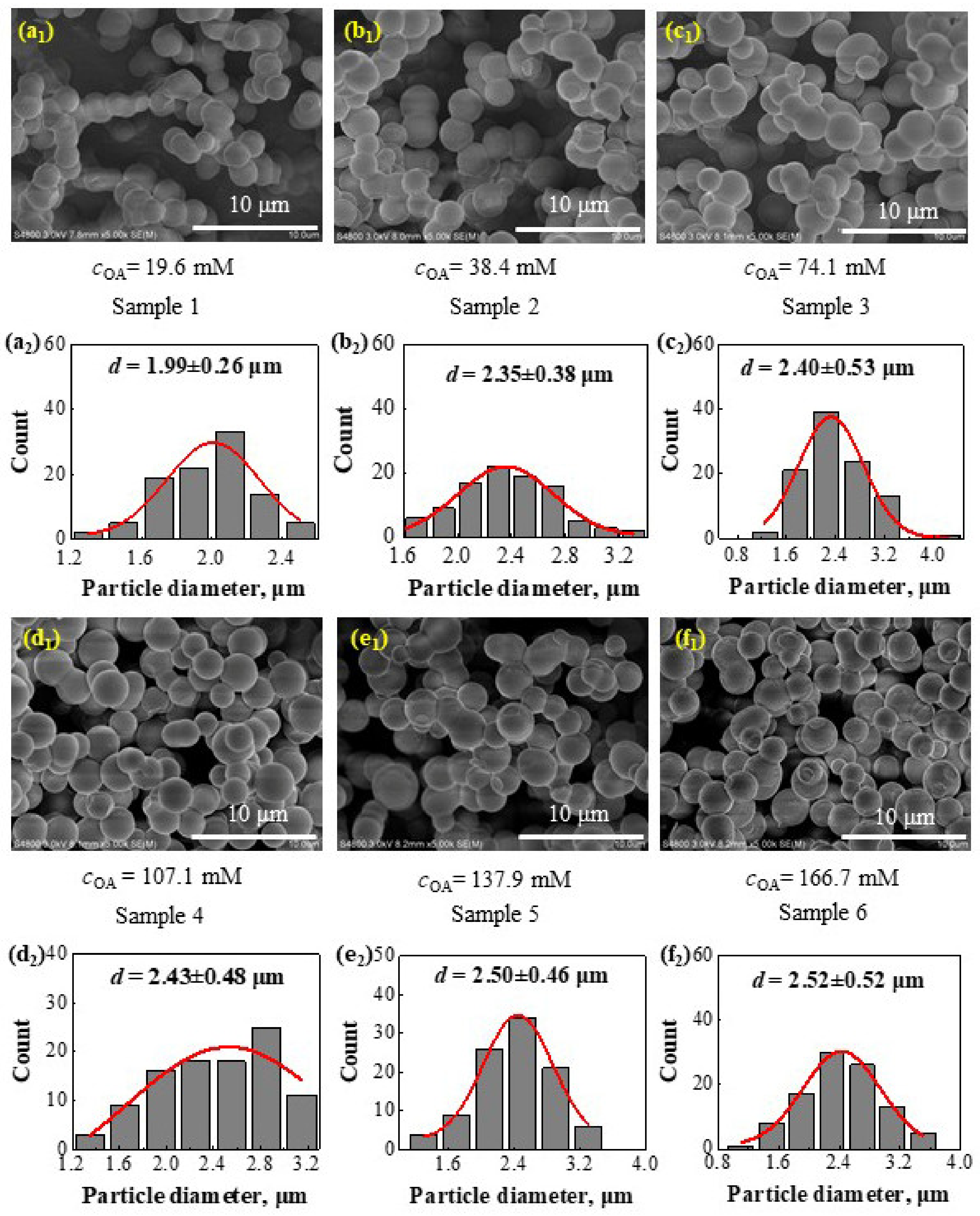
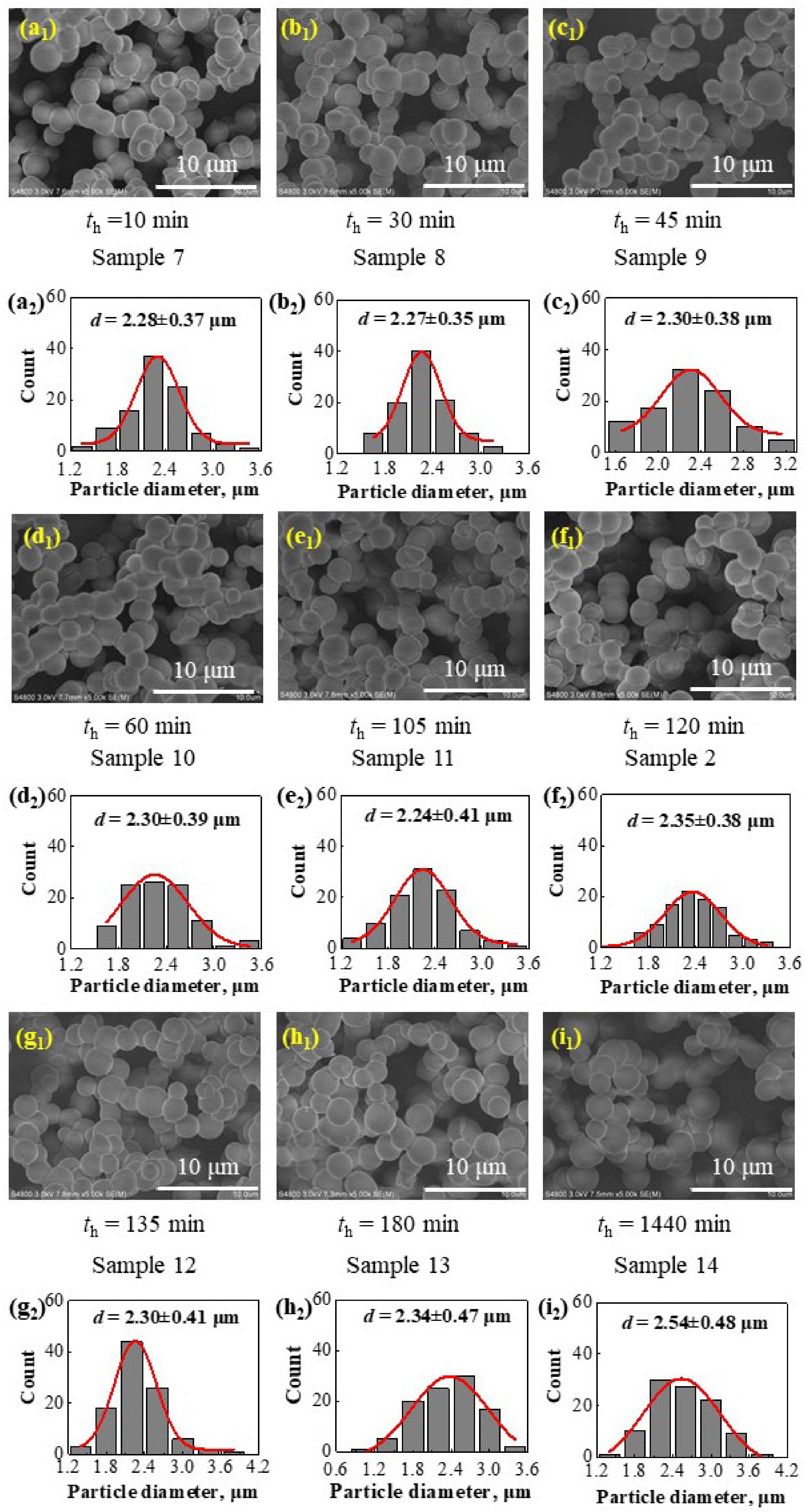
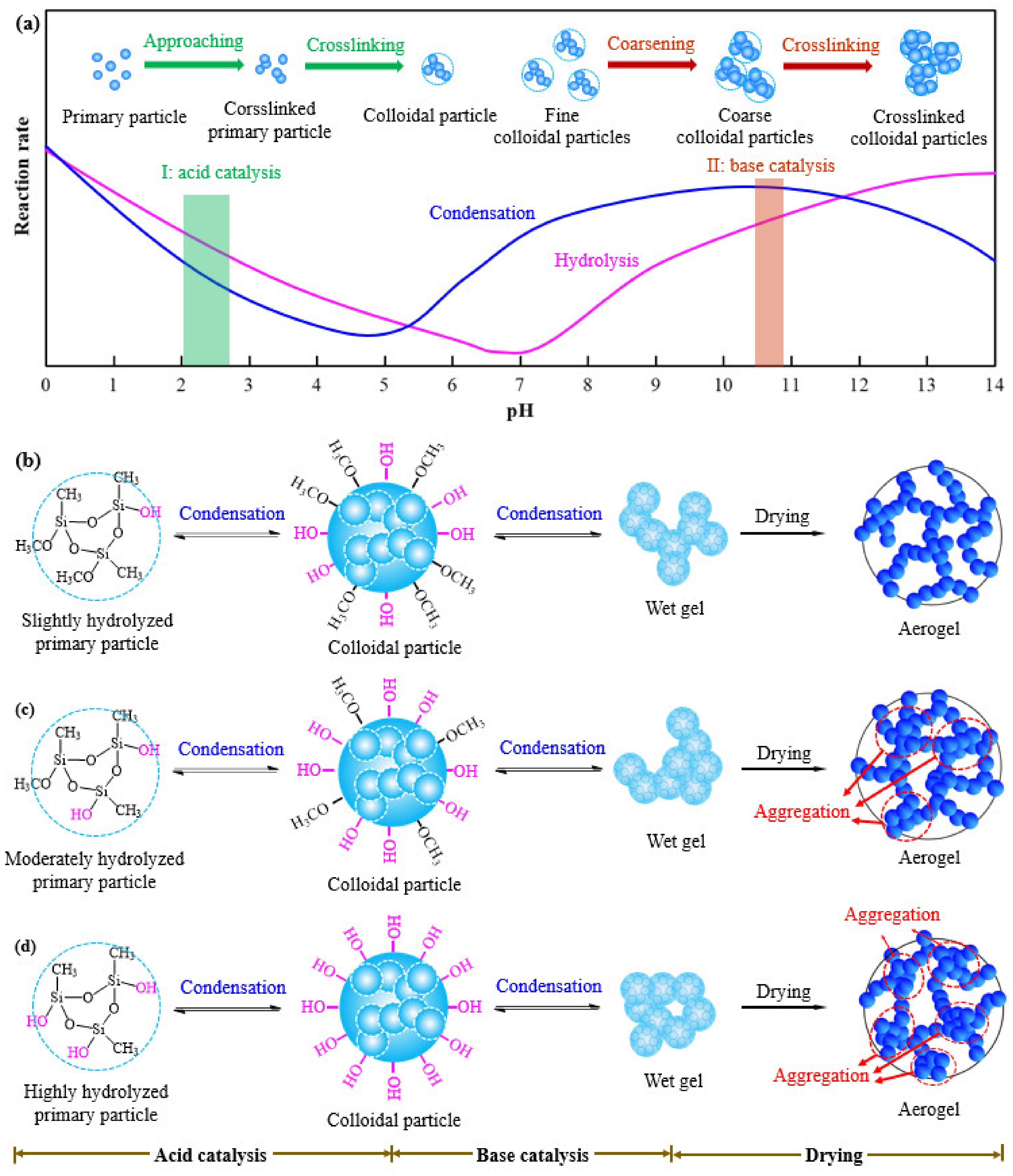
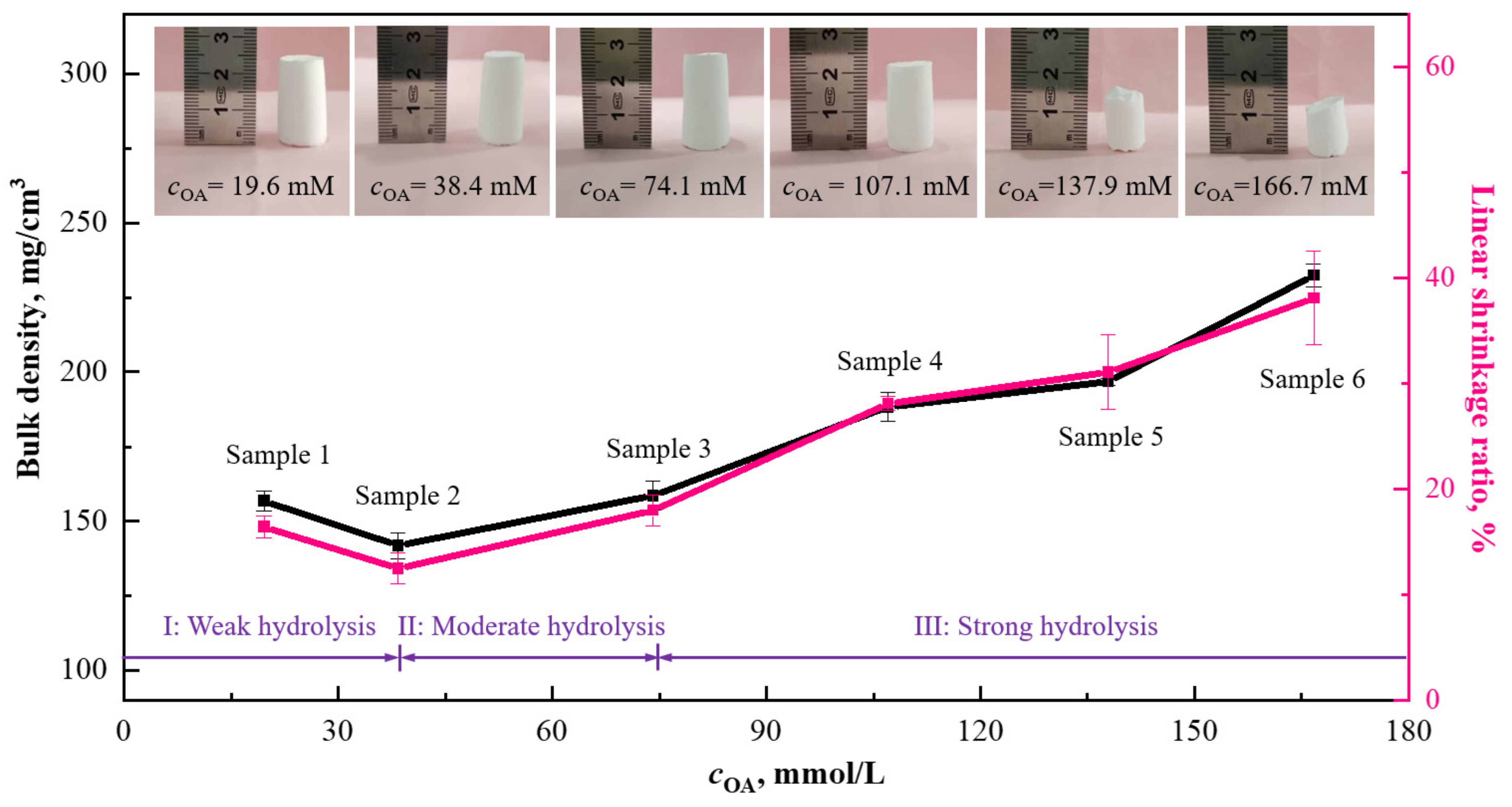
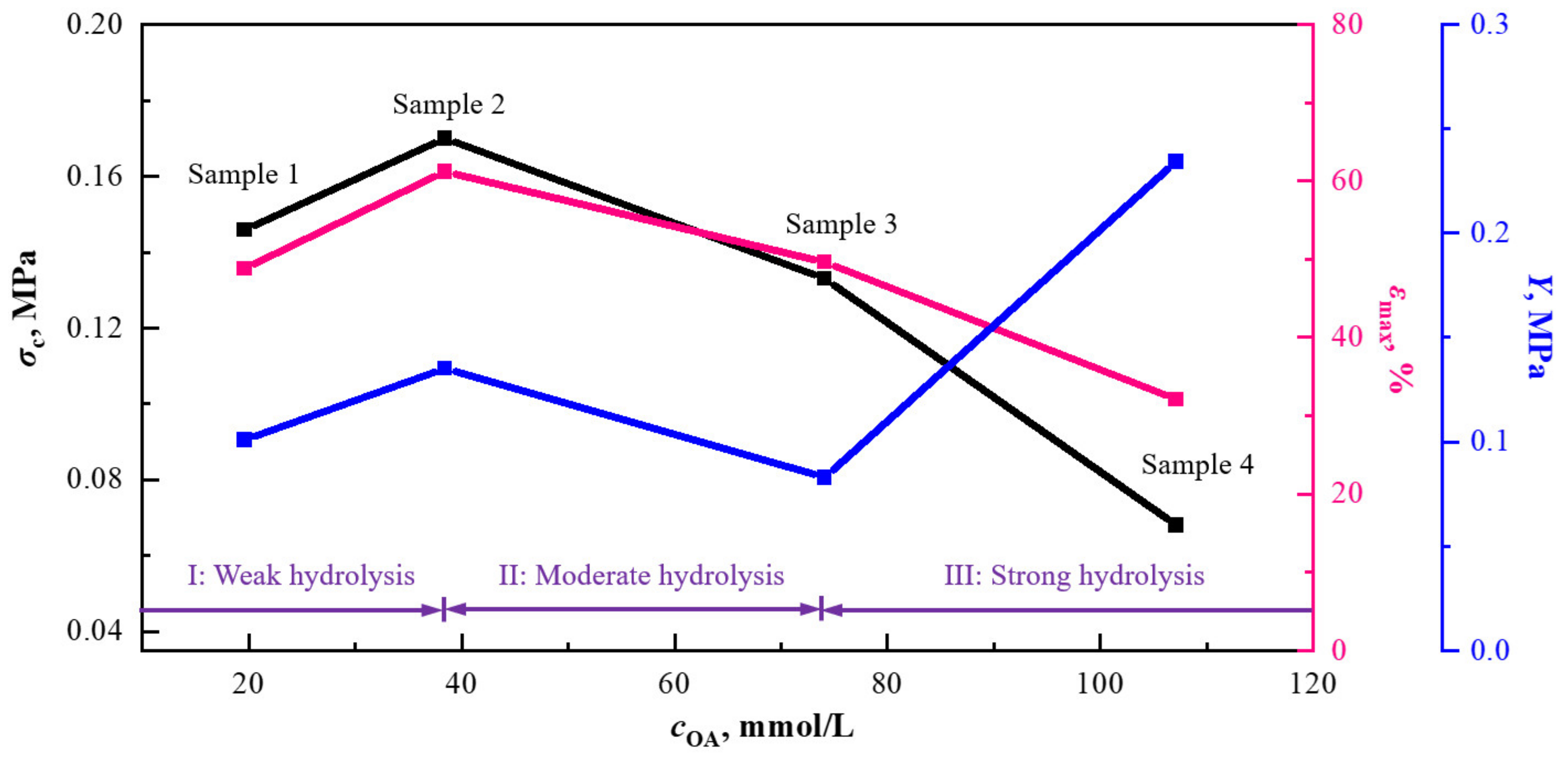
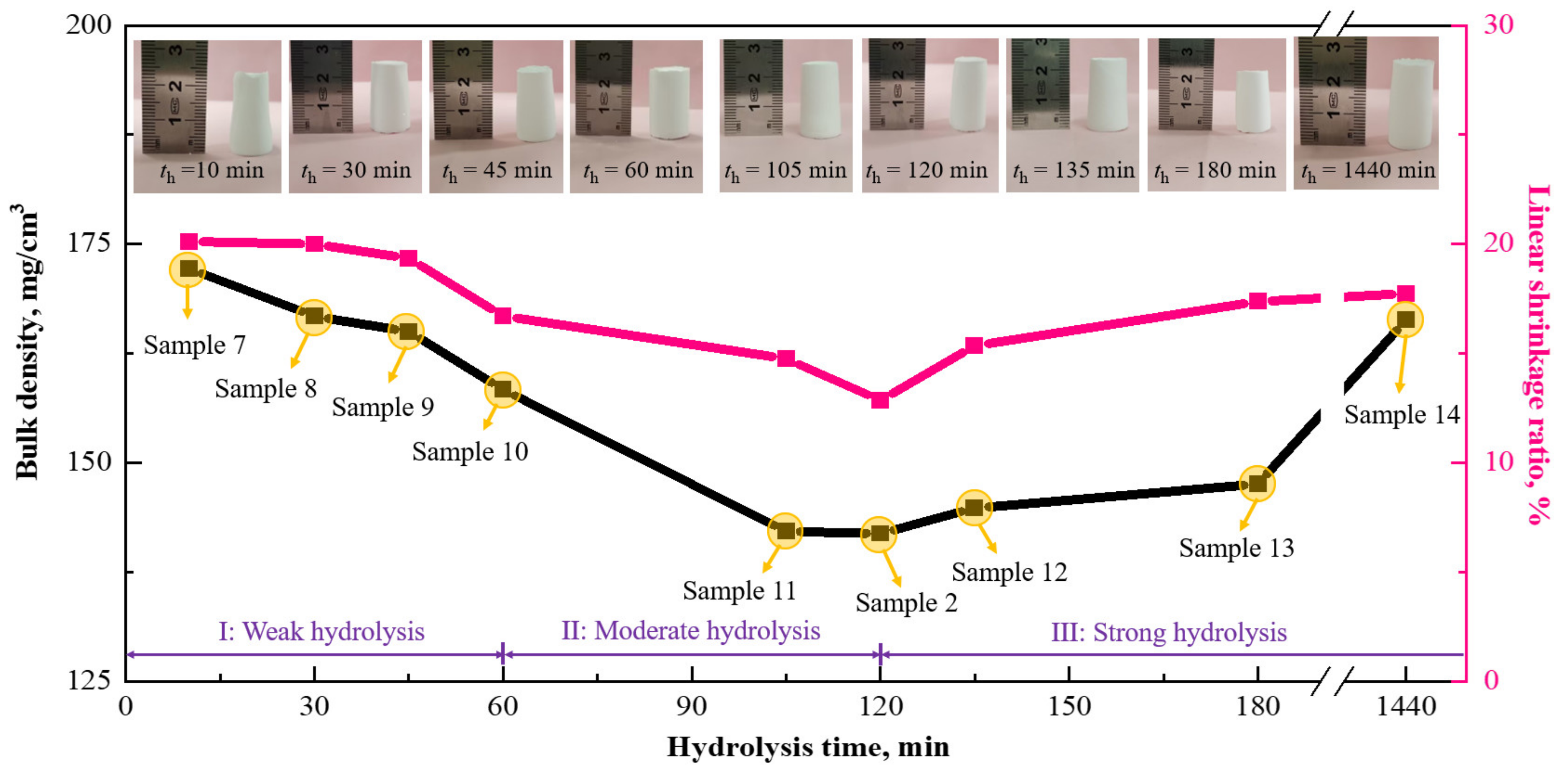
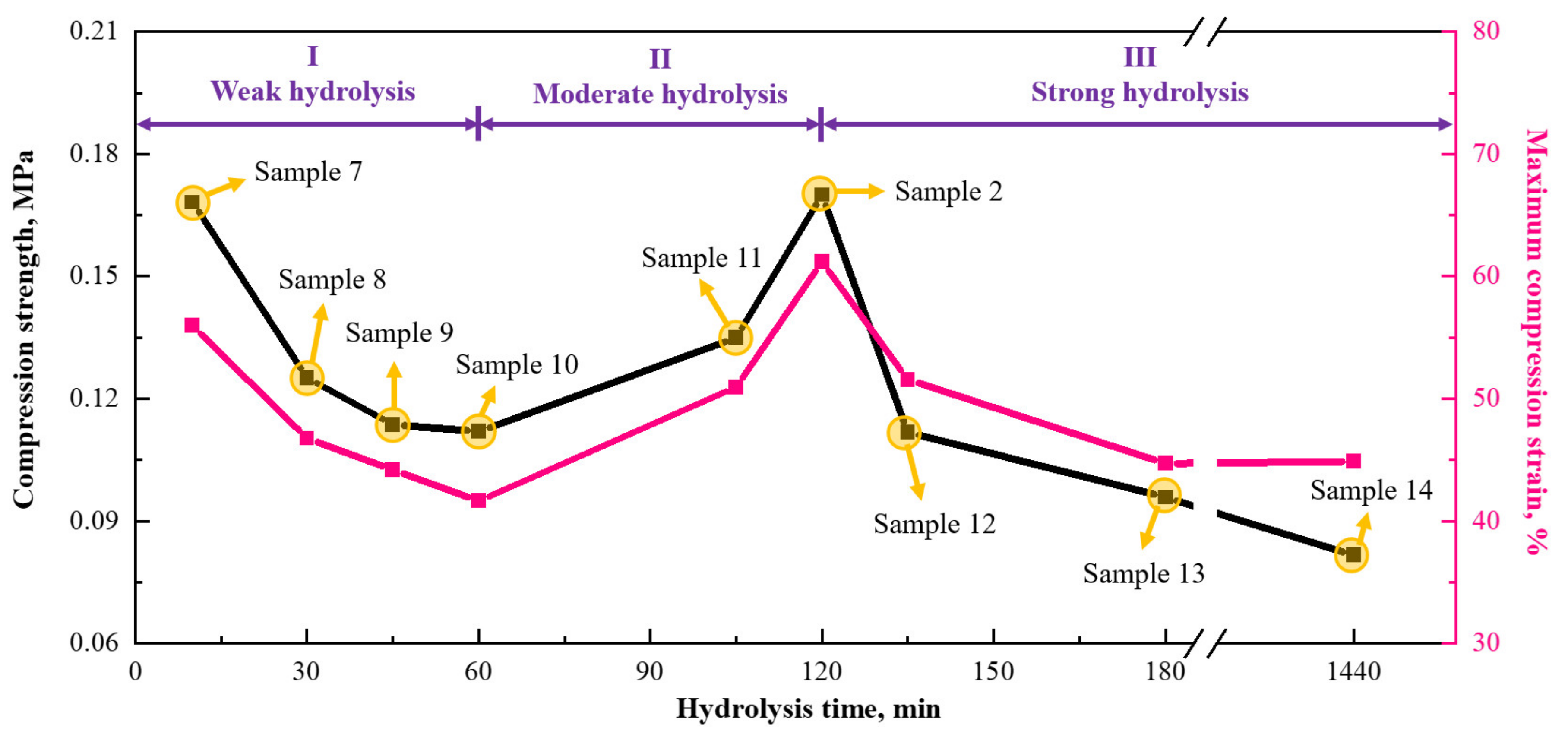

| Name | Abbreviation | Chemical Formula | Supply Company | Notes |
|---|---|---|---|---|
| Deionized water | H2O | - | Jiangnan University, Wuxi, China | Homemade |
| Methyltrimethoxysilane | MTMS | 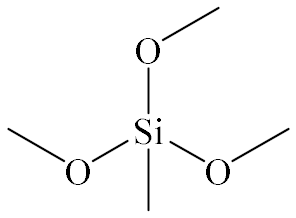 | Sinopharm Chemical Reagent Co., Ltd., Shanghai, China | Purity: ≥99.8% |
| Ethanedioic acid dihydrate | EAD | 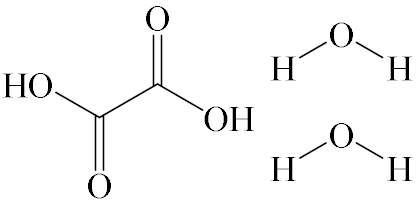 | Sinopharm Chemical Reagent Co., Ltd., Shanghai, China | Purity: ≥99.5% |
| Ammonia water | NH3∙H2O | NH4+OH− | Sinopharm Chemical Reagent Co., Ltd., Shanghai, China | Ammonia content: 25–28% |
| Isopropyl alcohol | IPA | 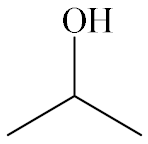 | Sinopharm Chemical Reagent Co., Ltd., Shanghai, China | Purity: ≥99.7% |
| Sample | MTMS, mL | IPA, mL | H2O, mL | OA Aqueous Solution, mL | cOA, mmol/L | Vsol, mL | pHacid | h | th, min | NH3·H2O Aqueous Solution, mL | pHbase | Integrity of Aerogel |
|---|---|---|---|---|---|---|---|---|---|---|---|---|
| 1 | 2.0 | 4.0 | 4.0 | 0.2 | 19.6 | 10.2 | 2.55 | 17.6 | 120 | 0.9 | 10.70 | ○ |
| 2 | 2.0 | 4.0 | 4.0 | 0.4 | 38.4 | 10.4 | 2.50 | 18.5 | 120 | 0.9 | 10.55 | ○ |
| 3 | 2.0 | 4.0 | 4.0 | 0.8 | 74.1 | 10.8 | 2.35 | 20.2 | 120 | 0.9 | 10.50 | ○ |
| 4 | 2.0 | 4.0 | 4.0 | 1.2 | 107.1 | 11.2 | 2.20 | 21.8 | 120 | 0.9 | 10.50 | ○ |
| 5 | 2.0 | 4.0 | 4.0 | 1.6 | 137.9 | 11.6 | 2.10 | 23.5 | 120 | 0.9 | 10.45 | ● |
| 6 | 2.0 | 4.0 | 4.0 | 2.0 | 166.7 | 12 | 2.00 | 25.2 | 120 | 0.9 | 10.45 | ● |
| 7 | 2.0 | 4.0 | 4.0 | 0.4 | 38.4 | 10.4 | 2.60 | 18.5 | 10 | 0.9 | 10.55 | ◐ |
| 8 | 2.0 | 4.0 | 4.0 | 0.4 | 38.4 | 10.4 | 2.60 | 18.5 | 30 | 0.9 | 10.55 | ◐ |
| 9 | 2.0 | 4.0 | 4.0 | 0.4 | 38.4 | 10.4 | 2.55 | 18.5 | 45 | 0.9 | 10.55 | ○ |
| 10 | 2.0 | 4.0 | 4.0 | 0.4 | 38.4 | 10.4 | 2.50 | 18.5 | 60 | 0.9 | 10.55 | ○ |
| 11 | 2.0 | 4.0 | 4.0 | 0.4 | 38.4 | 10.4 | 2.50 | 18.5 | 105 | 0.9 | 10.55 | ○ |
| 12 | 2.0 | 4.0 | 4.0 | 0.4 | 38.4 | 10.4 | 2.50 | 18.5 | 135 | 0.9 | 10.55 | ○ |
| 13 | 2.0 | 4.0 | 4.0 | 0.4 | 38.4 | 10.4 | 2.45 | 18.5 | 180 | 0.9 | 10.55 | ○ |
| 14 | 2.0 | 4.0 | 4.0 | 0.4 | 38.4 | 10.4 | 2.65 | 18.5 | 1440 | 0.9 | 10.55 | ◐ |
Disclaimer/Publisher’s Note: The statements, opinions and data contained in all publications are solely those of the individual author(s) and contributor(s) and not of MDPI and/or the editor(s). MDPI and/or the editor(s) disclaim responsibility for any injury to people or property resulting from any ideas, methods, instructions or products referred to in the content. |
© 2023 by the authors. Licensee MDPI, Basel, Switzerland. This article is an open access article distributed under the terms and conditions of the Creative Commons Attribution (CC BY) license (https://creativecommons.org/licenses/by/4.0/).
Share and Cite
Zhang, G.; Li, C.; Wang, Y.; Lin, L.; Ostrikov, K. High-Performance Methylsilsesquioxane Aerogels: Hydrolysis Mechanisms and Maximizing Compression Properties. Gels 2023, 9, 720. https://doi.org/10.3390/gels9090720
Zhang G, Li C, Wang Y, Lin L, Ostrikov K. High-Performance Methylsilsesquioxane Aerogels: Hydrolysis Mechanisms and Maximizing Compression Properties. Gels. 2023; 9(9):720. https://doi.org/10.3390/gels9090720
Chicago/Turabian StyleZhang, Guihua, Chengdong Li, Yuxiang Wang, Liangliang Lin, and Kostya (Ken) Ostrikov. 2023. "High-Performance Methylsilsesquioxane Aerogels: Hydrolysis Mechanisms and Maximizing Compression Properties" Gels 9, no. 9: 720. https://doi.org/10.3390/gels9090720
APA StyleZhang, G., Li, C., Wang, Y., Lin, L., & Ostrikov, K. (2023). High-Performance Methylsilsesquioxane Aerogels: Hydrolysis Mechanisms and Maximizing Compression Properties. Gels, 9(9), 720. https://doi.org/10.3390/gels9090720





_Ostrikov.png)

